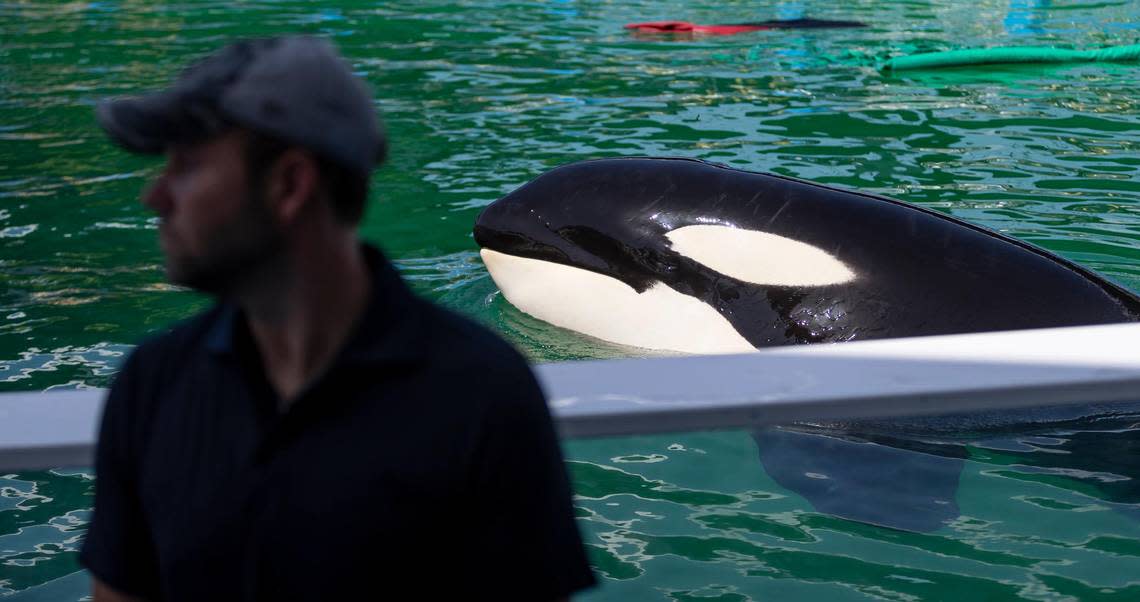Lolita had chronic health problems in her last years. This one finally claimed the orca

Miami’s world-famous performing orca Lolita had suffered chronic health issues, particularly in her last years, and rebounded. This time, the killer whale could not recover from a failing kidney system.
The Miami Seaquarium, where the killer whale has remained in captivity for more than 50 years and served as the star attraction for decades, said in a statement that Lolita had “started exhibiting serious signs of discomfort” two days earlier and died on Friday. The Seaquarium, in a post on the social media site X, said renal disease was believed to be the cause.
Lolita was 57, relatively young when members of her species in the wild can live to more than 100. Lolita’s mother may even still be alive. Friends of Lolita, a whale freedom advocacy group, said she’s still swimming with a wild pod in the Pacific Northwest at 89 years old. Lolita died just as plans around an eventual release to the wild were beginning to take shape.
Since her mate died in 1980, Lolita has become the only solitary orca in captivity in the nation, in the smallest killer whale tank in the U.S.
Read More: Lolita, the Seaquarium orca, died Friday as plans to move her got closer to reality
The whale, also known as Tokitae, had a long history of health issues that worsened in the last decade or so.
Last year, People for the Ethical Treatment of Animals issued a report saying the whale was “deathly ill” with pneumonia, a claim the Seaquarium initially denied.
A former SeaWorld veterinarian now on the team that was preparing Lolita for her release, Tom Reidarson, now says she had a “nearly fatal” bout will the illness last fall.
“It became pretty dire,” he told the Miami Herald.
But, he told the paper in an interview last month, she had fully recovered. “She’s actually really healthy right now,” he said.
In a statement, PETA President Ingrid Newkirk pointed to a 2021 federal inspection report that showed Miami Seaquarium failed to provide Lolita with sufficient shade, restricted her food intake and was pushed to do tricks that may have caused her pain after she injured her jaw.
“Kind people begged the Miami Seaquarium to end Lolita’s hellish life in a concrete cell and release her to a seaside sanctuary, where she could dive deep, feel the ocean’s currents, and even be reunited with the orca believed to be her mother, but plans to move her to a seaside sanctuary came too late, and Lolita was denied even a minute of freedom from her grinding 53 years in captivity,” Newkirk said in the statement.
In 2016, unsealed court documents reported by the Seattle Times revealed that Lolita was being treated with eye drops for an inflammatory eye condition and had gotten some dental work done after experiencing tooth pain. Lolita also suffered from dehydration, the records showed.
The cause of death for orcas in captivity isn’t well known, since the parks that house them are not required to release that information. However, a repository of some necropsies of dead captive orcas from Sea World maintained by the Orca Project does list kidney issues as a cause of death for at least one, Canuck II in 1997.
PETA Spokesman David Perle said kidney issues appear to be a “pretty rare” cause of death for captive orcas. Their records show only two renal disease-related deaths, Canuck II and Kandu III in 1975.
“Septicemia is a blood infection and can cause kidney failure, but that’s only an additional 3 orcas,” he wrote.
Pneumonia, which Lolita battled recently, appears to be a far more common cause of death for captive orcas.
